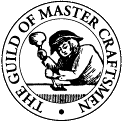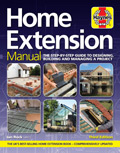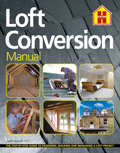Wales
November 2022
changes
England
June 2022
changes
Flat Roof - Deck
Deck
A ‘deck’ is the structural substrate of a flat roof and should be capable of supporting the static and dynamic design loads as well as any loads occurring during construction from machinery and plant.
The deck should be of adequate strength and stiffness to ensure structural integrity and provide suitable support to the roof covering system, the VCL and insulation board (warm roof) without deflection.
The deck must be dry, clean and primed as necessary before laying the waterproofing and insulating system to ensure good adhesion.
The material used for the roof deck must be moisture resistant and will usually be plywood, OSB or timber boards although concrete and woodwool slab or profiled metal can also be used.
Ordinary chipboard is not recommended as it may absorb moisture when damp and lose its structural integrity.
Timber Boarding
Softwood timber boarding is the traditional material for the deck.
The timber used for the deck should be:
- of a naturally durable species or preservative-treated in accordance with BS EN 599-1:2009
- a minimum of 19mm thick.
- double nailed at each joist.
- laid with staggered joints.
- laid with the edges of the board corresponding with joists or noggins.

Tongued and grooved boards are preferred over plain-edged to help minimise warping after natural shrinkage, which may cause damage to the waterproof covering.
Plywood
Plywood for a roof deck should be of marine grade and suitable for external use to BS EN 636 or a bond Class 2 or better, complying with BS EN 314.
Plywood boards used for the deck should be:
- a minimum thickness of 18mm (these will be able to span up to 600mm).
- double nailed at each joist.
- laid with staggered joints.
- laid with the edges of the board corresponding with joists or noggins.
- provided with expansion gaps of 3mm between the boards.
Oriented Strand Board (OSB)
OSB is a type of wood panel comprising of timber strands and should be manufactured in accordance with BS EN 300: Part 3: 1992.
OSB Boards used for the deck should be:
- a minimum thickness of 18mm (these will be able to span up to 600mm).
- double nailed at each joist.
- laid with staggered joints.
- laid with the edges of the board corresponding with joists or noggins.
- provided with an expansion gap of 3mm between boards.

Concrete
- A concrete deck is more common on blocks of flats and commercial buildings.
- Concrete is a strong and steady deck material providing both the loadbearing supportive structure and roof deck.
- Concrete decks are either reinforced cast in situ (poured on site), or supplied as pre-cast concrete units.
- The surface of a concrete deck should be free from ridges and hollows. A screed of sand and cement is usually provided over the surface to get a smooth base for the insulating or waterproofing layer above and to create the desired fall. The fall can also be produced by proprietary decking or insulation products which are produced ready-cut to a suitable fall.
- Concrete decks should only be covered by non-bonded or partially bonded roof coverings.
Woodwool Slab
- Woodwool slabs are a rigid timber and cement based panels, which can be reinforced if long spans are required.
- Woodwool slabs should be no less than 50mm thick and conform to BS EN 13168.
Profiled Metal Decking

- This type of deck is usually formed in galvanised steel or aluminium.
- The lightweight construction has the advantage of being able to cope with very long spans, enabling large room spaces to be created and reducing the load on the building's structure.
- Profiled metal decking does not provide a continuous surface and therefore can only be used when supporting a timber deck or rigid insulation which can then be covered with a bitumous or polymeric membrane.
- This type of decking is not suitable for cold roof design unless it is subsequently overlaid with plywood or OSB.
Deck
A ‘deck’ is the structural substrate of a flat roof and should be capable of supporting the static and dynamic design loads as well as any loads occurring during construction from machinery and plant.
The deck should be of adequate strength and stiffness to ensure structural integrity and provide suitable support to the roof covering system, the VCL and insulation board (warm roof) without deflection.
The deck must be dry, clean and primed as necessary before laying the waterproofing and insulating system to ensure good adhesion.
The material used for the roof deck must be moisture resistant and will usually be plywood, OSB or timber boards although concrete and woodwool slab or profiled metal can also be used.
Ordinary chipboard is not recommended as it may absorb moisture when damp and lose its structural integrity.
Timber Boarding
Softwood timber boarding is the traditional material for the deck.
The timber used for the deck should be:
- of a naturally durable species or preservative-treated in accordance with BS EN 599-1:2009
- a minimum of 19mm thick.
- double nailed at each joist.
- laid with staggered joints.
- laid with the edges of the board corresponding with joists or noggins.

Tongued and grooved boards are preferred over plain-edged to help minimise warping after natural shrinkage, which may cause damage to the waterproof covering.
Plywood
Plywood for a roof deck should be of marine grade and suitable for external use to BS EN 636 or a bond Class 2 or better, complying with BS EN 314.
Plywood boards used for the deck should be:
- a minimum thickness of 18mm (these will be able to span up to 600mm).
- double nailed at each joist.
- laid with staggered joints.
- laid with the edges of the board corresponding with joists or noggins.
- provided with expansion gaps of 3mm between the boards.
Oriented Strand Board (OSB)
OSB is a type of wood panel comprising of timber strands and should be manufactured in accordance with BS EN 300: Part 3: 1992.
OSB Boards used for the deck should be:
- a minimum thickness of 18mm (these will be able to span up to 600mm).
- double nailed at each joist.
- laid with staggered joints.
- laid with the edges of the board corresponding with joists or noggins.
- provided with an expansion gap of 3mm between boards.

Concrete
- A concrete deck is more common on blocks of flats and commercial buildings.
- Concrete is a strong and steady deck material providing both the loadbearing supportive structure and roof deck.
- Concrete decks are either reinforced cast in situ (poured on site), or supplied as pre-cast concrete units.
- The surface of a concrete deck should be free from ridges and hollows. A screed of sand and cement is usually provided over the surface to get a smooth base for the insulating or waterproofing layer above and to create the desired fall. The fall can also be produced by proprietary decking or insulation products which are produced ready-cut to a suitable fall.
- Concrete decks should only be covered by non-bonded or partially bonded roof coverings.
Woodwool Slab
- Woodwool slabs are a rigid timber and cement based panels, which can be reinforced if long spans are required.
- Woodwool slabs should be no less than 50mm thick and conform to BS EN 13168.
Profiled Metal Decking

- This type of deck is usually formed in galvanised steel or aluminium.
- The lightweight construction has the advantage of being able to cope with very long spans, enabling large room spaces to be created and reducing the load on the building's structure.
- Profiled metal decking does not provide a continuous surface and therefore can only be used when supporting a timber deck or rigid insulation which can then be covered with a bitumous or polymeric membrane.
- This type of decking is not suitable for cold roof design unless it is subsequently overlaid with plywood or OSB.
To begin compiling your Building Regulations Specification with one of our Web-Apps, choose either House Extension, New Build, Flat Conversion, Loft Conversion, Garage Conversion, Basement Conversion, Flat Conversion, New Build Flats or Garage Build.













